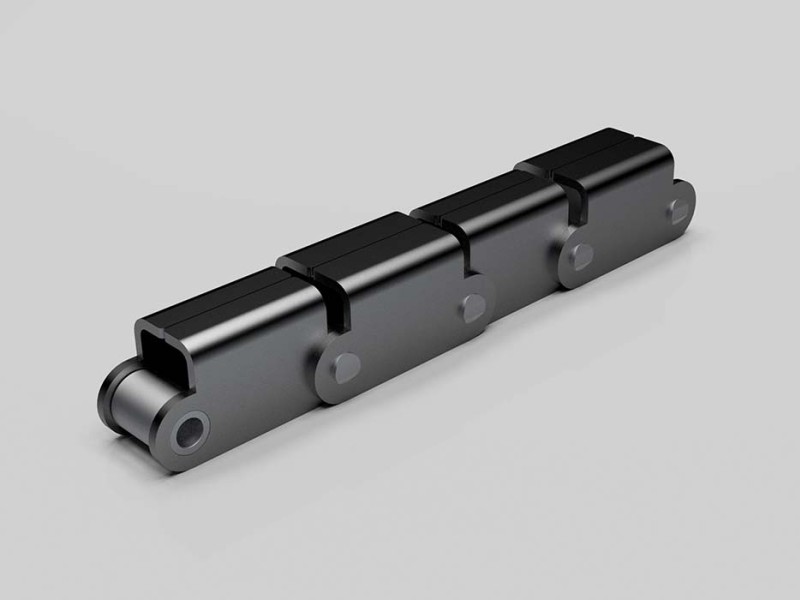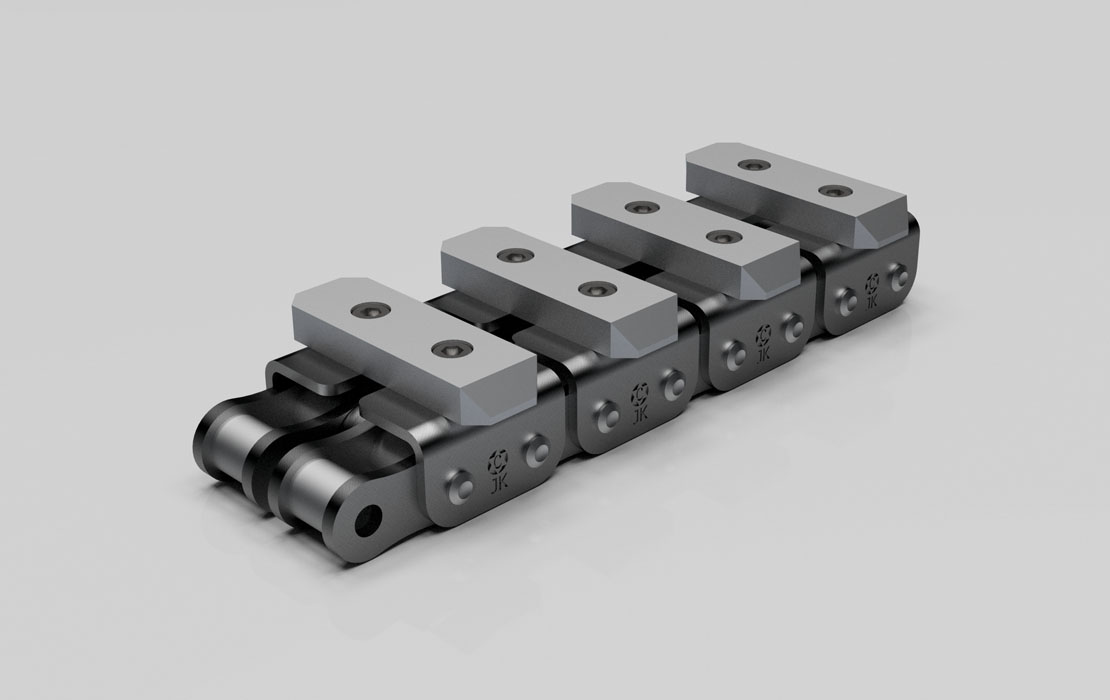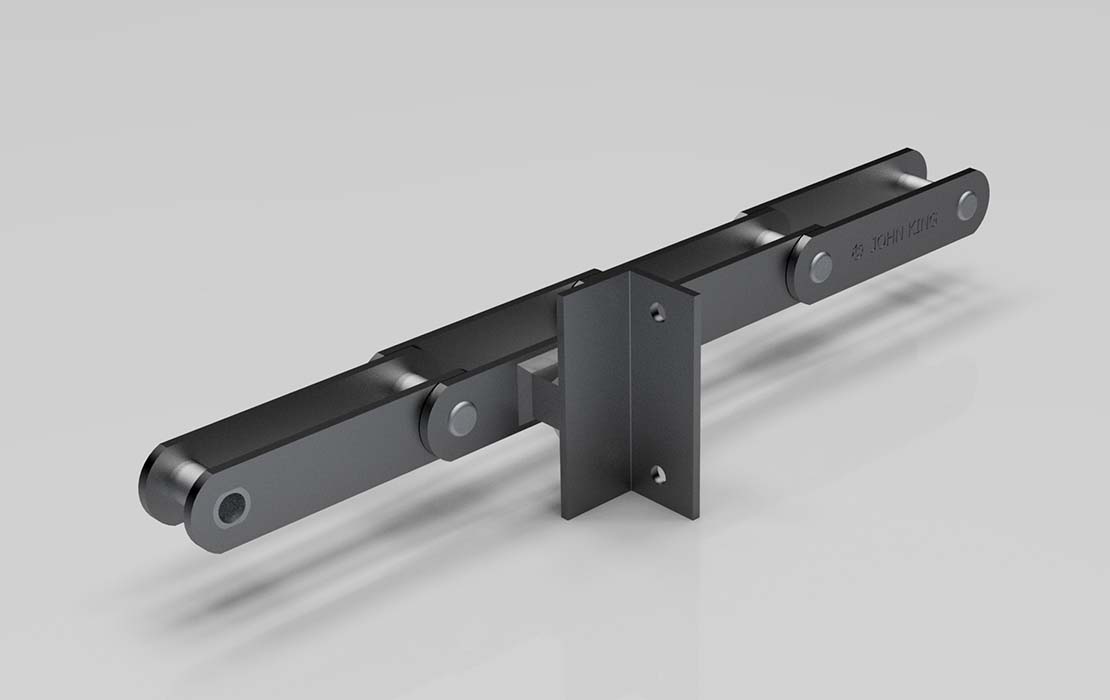Checking Conveyor Chain Tension: Signs That the Chain Needs to Be Replaced

Article content
Excessive Slack in the Chain
One of the most obvious signs of improper tension in a conveyor chain is excessive slack. If the chain is too loose, it will not engage properly with the sprockets, leading to inefficient operation and potential damage.
Signs:
-
Loose chain: If you can pull the chain away the sprockets without significant resistance, it’s likely too loose.
-
Uneven movement: A loose chain will cause the conveyor system to move unevenly, leading to delays or malfunctions.
Solution:
-
Adjust the chain tension: If the chain is too loose, adjust the tension to bring it back the optimal range. Regular monitoring and adjustments will help maintain efficiency.

Excessive Tightness of the Chain
While slack is a problem, excessive tightness in the chain can be equally detrimental. A chain that is too tight will place additional strain on the system, leading to accelerated wear on the chain and other components.
Signs:
-
Inability to move smoothly: A chain that is too tight will not move freely, causing friction and unnecessary stress on the system.
-
Rapid wear on chain links: Excessive tension causes rapid wear on the links, reducing the chain’s lifespan.
-
Overheating: If the chain is too tight, it can cause overheating due to the increased friction between the moving parts.
Solution:
-
Loosen the chain: Adjust the chain tension to ensure that it is neither too tight nor too loose. Follow the manufacturer’s recommended tension specifications to maintain the chain’s performance.
Sudden Changes in Tension
Another sign that the conveyor chain may need replacing is a sudden change in the tension. If the tension fluctuates unexpectedly, it could indicate damage or wear on the chain links or sprockets.
Signs:
-
Uneven tension: If you notice that the chain tension changes suddenly tight to loose, this could indicate a problem with the chain or sprockets.
-
Inconsistent chain movement: A fluctuating tension causes the chain to move inconsistently, potentially leading to further mechanical failures.
Solution:
-
Inspect the entire system: If the chain tension changes unexpectedly, it’s crucial to inspect both the chain and the sprockets for signs of damage. If the chain is too worn, it may need to be replaced.
How to Check Conveyor Chain Tension
Regularly checking the tension of your conveyor chain is essential to ensure optimal performance and prevent costly repairs. Below are the steps to check chain tension effectively.
Methods:
-
Manual tension check: A simple way to check tension is by manually pulling on the chain. If it moves too easily or feels too tight, it needs adjustment.
-
Using a tension gauge: For more accuracy, a tension gauge can be used to measure the exact tension on the chain. This tool ensures that the chain is within the manufacturer’s recommended tension range.
-
Visual inspection: Sometimes, visual cues like sagging links or an overly tight chain can indicate tension issues.
Solution:
-
Adjust based on findings: Once you’ve identified any issues with chain tension, adjust it as needed. Regular adjustments are key to keeping your system running smoothly.
When to Replace the Conveyor Chain
While tension adjustments are essential, sometimes the chain may need to be replaced entirely if it shows signs of severe wear.
Signs it’s time to replace:
-
Severe wear on chain links: If the chain links are visibly worn down or damaged, replacement is necessary to avoid system failure.
-
Constant need for adjustments: If you find yourself constantly adjusting the chain’s tension, it may be a sign that the chain is nearing the end of its service life.
-
Frequent breakdowns or malfunctions: If the system is experiencing regular breakdowns despite tension adjustments, it may be time to replace the chain.
Solution:
-
Replace with a high-quality chain: If replacement is needed, choose a high-quality chain that meets the system’s requirements to ensure longevity and efficiency.

Conclusion
Maintaining the proper tension of your industrial conveyor chain is crucial for system efficiency and longevity. Whether the chain is too loose, too tight, or the tension fluctuates unexpectedly, it’s important to identify these issues early and make the necessary adjustments. Regular inspection and timely replacement of worn chains will help keep your conveyor system running smoothly, reducing downtime and maintenance costs.
If you need more advice on checking and maintaining industrial conveyor chains, feel free to contact us for detailed support!



AAdministratorsQTV
Welcome. Feel free to leave a comment, we will respond soon